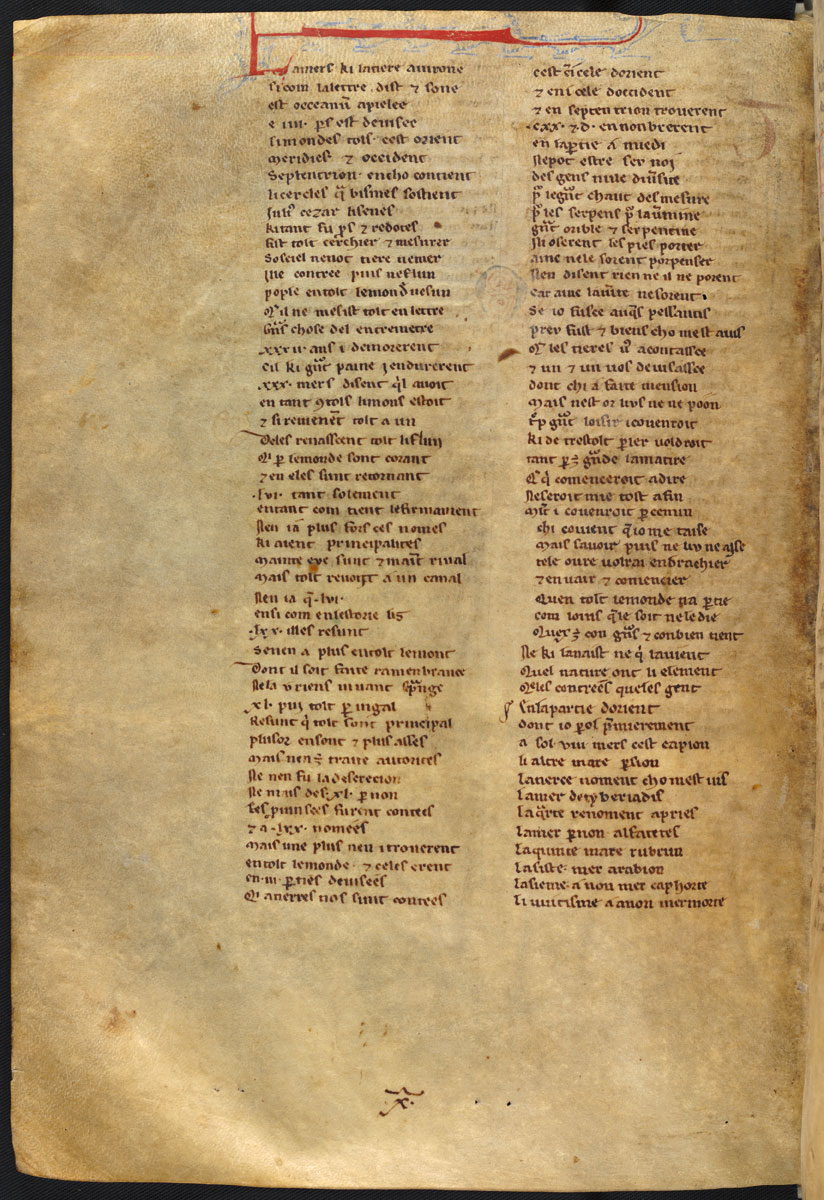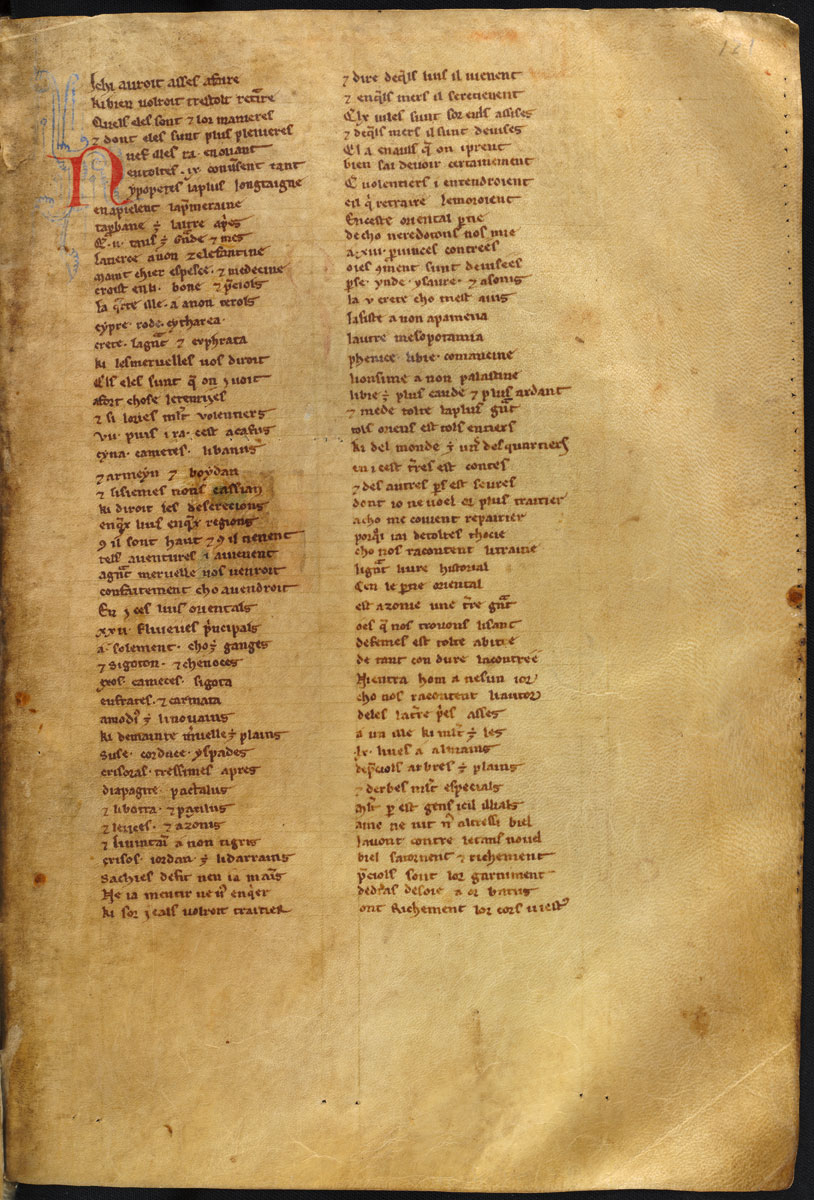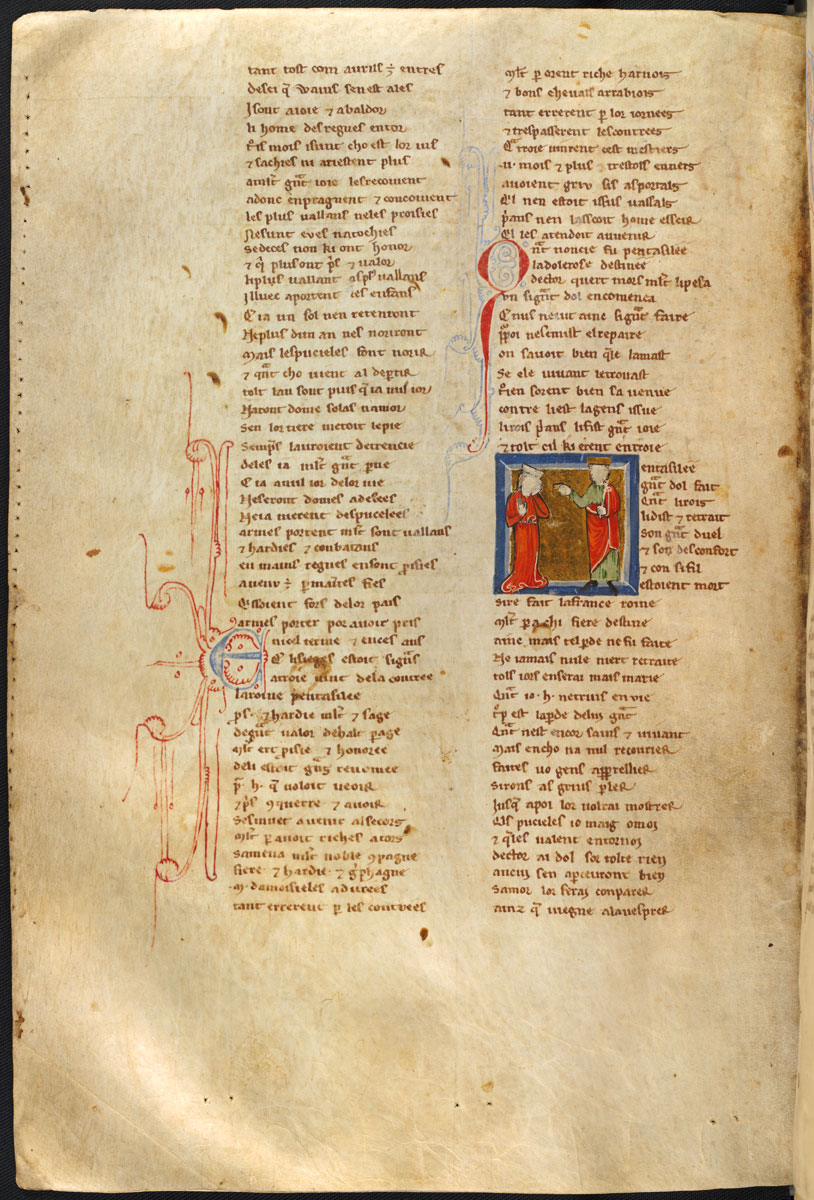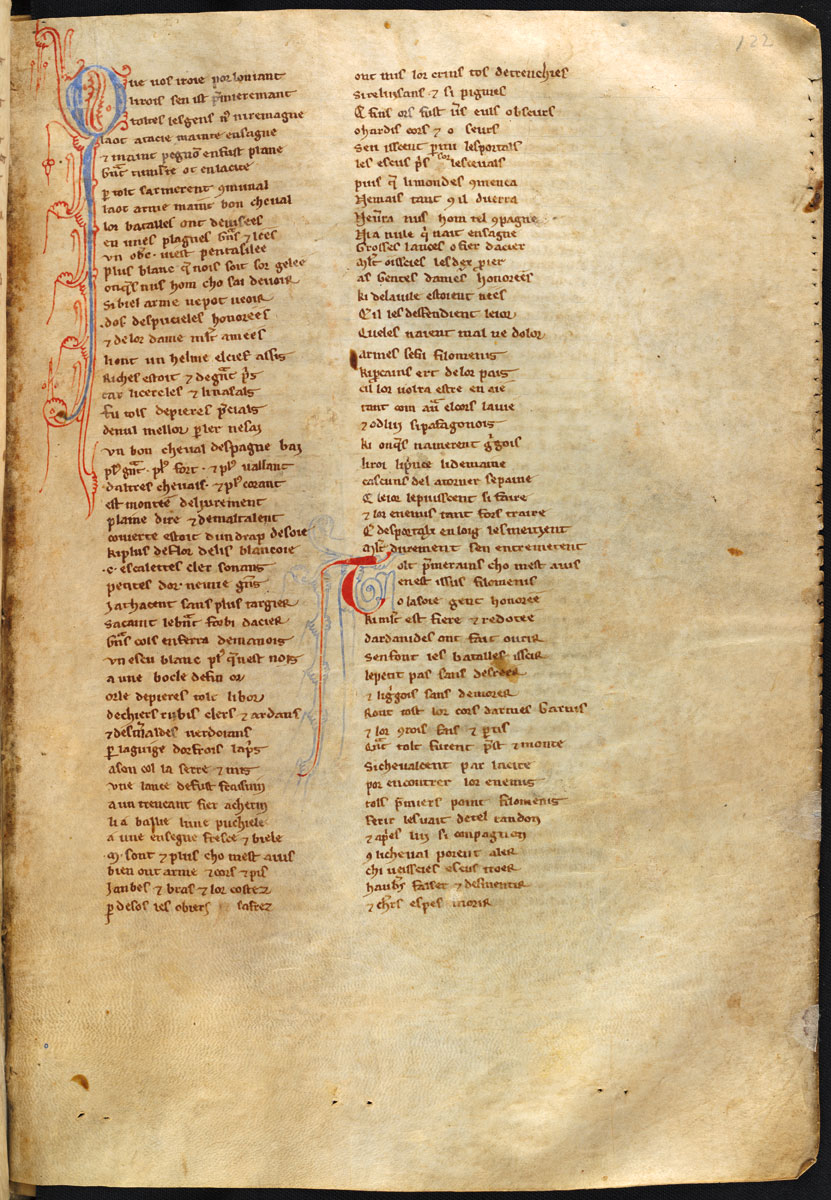Forming quires
Once in possession of the sheets of parchment or paper, a scribe would make them into usable units for writing. This generally involved forming them into quires or gatherings, rather like booklets. Most manuscript books contain several quires bound together.
There are two ways in which this can be done. The descriptions below are derived from Christopher de Hamel, Scribes and Illuminators (London: British Museum Press, 1992, pp. 19-20). You will need several sheets of paper which are either coloured or marked in some way on one side only. This is to replicate the difference in colour and texture between the flesh side of the parchment, and the hair side.
Method 1
Take your sheets of paper and place them one on top of another, making sure that you have blank against blank, colour against colour. Once you have a pile of 4 or 5, fold them all in half, putting the short ends together. With a crease in the middle, you now have a pile of bifolia. Each folded sheet is a bifolium, that is, two folios (leaves), and the whole pile is called a gathering. Depending on the number of sheets of paper you have used, it will have either 8 leaves or 10 leaves. Were these leaves to be written up and bound, the gathering would be called a quire. This is the simplest method of forming a quire, but it relies on the sheets being cut independently to almost exactly the same size, which is hard to achieve. It was often used for very large volumes.
Method 2
Take just one of your sheets of paper. It should still already be folded in the middle: try to have the coloured side facing in. In this form, it is folio shape.
Take another sheet: fold it in half again, into quarto shape.
Take a third sheet: fold it in half, and then in half again, into octavo shape.
You could probably take a fourth sheet and fold it one more time again, into a very tiny bundle.
Now take the octavo booklet – a quire, containing eight folios – and hold the central fold like a book. Cut the pages with a finger or a knife.
The outcome of both methods is that white side and white side are always facing each other, as are coloured and coloured. Were you to flick through any parchment manuscript, you would see a similar pattern, of whiter pages (flesh side), then darker pages (hair side), alternating through the openings. This arrangement is part of the aesthetic of parchment manuscripts: it occurs automatically through folding and this seems to have been the most common practice in the Middle Ages.




Hair side opening, followed by flesh side opening, from book of French romances and fabliaux,
WLC/LM/6, ff. 120v-122r
Folios and foliation
By convention, manuscripts are foliated rather than paginated. Instead of numbering every page, as in a modern book, each leaf is numbered. The word for leaf in Latin is folium, plural folia. So a quire might have 8 leaves, made from 4 bifolia or a single sheet folded into octavo shape. You would indicate a particular writing space by the leaf number, e.g. 2, followed by either recto (abbreviated to ‘r’) or verso (abbreviated to ‘v’). The recto is the page on the right - the first side of the leaf that you encounter when reading left to right. The verso is the other side – the reverse, or back.
In the illustration above, we are looking at folio 120v, then folio 121r, then folio 121v and finally folio 122r.
An animated video produced by the Getty Museum demonstrates folios and foliation, and the gathering of folios into quires for binding.
Collation
The action of arranging a number of quires or gatherings into book form is called 'collation'. 'Collation' also means the technical description or statement of gatherings in the book, often seen in reference works or catalogues of manuscripts. The collation is a physical description of the book, which makes reference to the number of quires and the number of leaves in each quire.
For example, the Wollaton Antiphonal is described by N.R. Ker in Medieval Manuscripts in British Libraries (Oxford : Clarendon Press, 1969-2002), as follows:
ff. i + 410+ i. The modern foliation, 1-413, generally only on the first leaf of each quire, takes account of the missing leaves. 590 x 400 mm. Written space 370-85 x 245-52 mm. 2 cols. 39 lines, or 13 lines + 4-line stave.
There is a lot of information provided here, including the total number of folios, how the folios are numbered up, the size of the page, and how the text and music is laid out. Ker continues:
Collation: 1-68 78 wants 5, 6 after f. 52 8-228 238 wants 8 after f. 183 24-258 26-276 28-368 3710 38-518 526 wants 5, 6 (blank) after f. 410 533 (ff. 411-13)
This information is dense and uses a kind of code which students of codicology (the study of books and manuscripts) will become familiar with. The numbers of the quires are given in ordinary numbers. There are 53 quires in total - this is the last quire number given in the collation. The quires vary in size. The number of folios per quire are given in superscript numbers. The first six quires all contain eight folios, so they have described together as 1-68. The seventh quire also contains, or contained, eight folios, but the fifth and sixth have been removed: 78 wants 5, 6 after f. 52. Quires 8-22, 24, 26, 28-36 and 38-51 are all the same size, containing eight folios each. However, quire 23 has one missing folio, quires 26 and 27 only contain six folios, quire 37 contains 10, and quire 52 should contain six but two are missing or not used. The final quire is a short one, containing only three folios.
Next page: Laying out the text